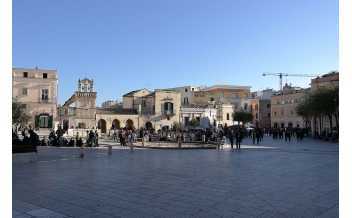Anyone who sees Matera cannot help but be awe-struck, so expressive and touching is its sorrowful beauty. - Carlo Levi
Matera, The Sassi and the Park of Chiese Rupestri
Activities
-
-
Church of Santa Chiara, Matera
The richly decorated façade, of this 17th-century church, has a lunette in...
-
Giovanni Pascoli Square, Matera
To the left of the 17th-century Palazzo Lanfranchi is the Piazzetta Pascoli...
-
Matera Cathedral, Matera
With its beautiful facade, which includes a rose window, divided by 16 small...
-
Museo Archeologico Nazionale Domenico...
Within a former convent, next door to the 17th-century Church of Santa...
-
Museo della Scultura Contemporanea, Matera
The Museum of Contemporary Sculpture includes nearly 400 sculptures from the...
-
Palazzo Lanfranchi, Matera
A stunning Baroque building which is now the National Museum of Medieval and...
-
Palazzo dell’Annunziata, Matera
This grand 18th-century convent was completed by two separate architects,...
-
Piazza Vittorio Veneto, Matera
The fountain in the middle of the irregularly-shaped Pizzia Vittorio Veneto...
-
Piazza del Sedile, Matera
This was already the Piazza Maggiore, the main market square, in the 14th...
-
San Pietro Caveoso, Matera
Founded in the 12th-century, San Pietro Caveoso (in the Sasso Caveoso) boasts...
-
Santa Maria de Idris and San Giovanni in...
Two conjoined cave-churches, with crypts built into the rock containing...
-
Santuario della Madonna delle Tre Porte,...
Despite the church's rather rustic entrance, the interior is well decorated...
-
The Church of Purgatorio, Matera
Don’t miss the visit to this beautiful church with its convex façade- the...
-
The Church of San Giovanni Battista, Matera
Just outside the walls of the historical center of the city, this is one of...
-





















